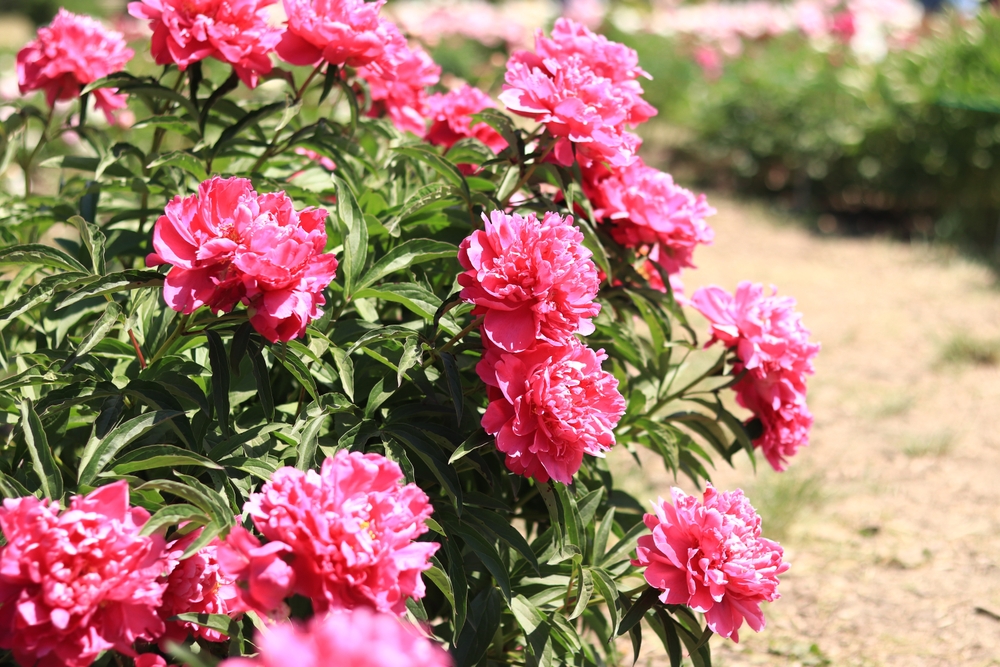Indiana claims the romantic, ruffled blooms of the peony as its state flower. Although this flower isn’t native to Indiana, it’s present in gardens and landscapes throughout this Midwestern state. In this article, you’ll learn how the peony became the Indiana state flower and explore fun facts and care tips.
History of the Indiana State Flower
What is the state flower of Indiana? Well, it wasn’t always the peony. From 1931 to 1957, the zinnia held this title. However, the state legislature declared the peony the new state flower in 1957.
The state’s General Assembly didn’t specify a particular type or color of peony, so all varieties of the plants are viewed as symbols of the state. This includes single and double blooms as well as white, pink, red, and yellow flowers.
About the Peony
Peonies are deciduous perennial shrubs in the Paeonia genus. The genus consists of around 30 species and thousands of different varieties.
When you look at peonies, you’ll find three main types: herbaceous, tree, and itoh.
- Herbaceous peonies are deciduous plants that produce new growth each spring and die back in the fall. They can live for over a hundred years. Since they require chilling hours, they grow best in zones three through seven.
- Tree peonies are also called woody peonies due to their woody stems that remain throughout the winter. Despite their common name, these plants grow as branching shrubs rather than trees.
- Itoh peonies are hybrids created by crossing an herbaceous peony with a tree peony. They die back in the winter but also produce lots of flowers.
All types of peonies become loaded with large flowers in the spring and early summer. They have layers of ruffled petals that combine to create beautiful blooms that are popular cut flowers. In fact, peonies are one of the most popular options for flower delivery!
Peony plants live for decades as long as you provide them with the proper care. Although the plants take a few years to start producing their sought-after blooms, they will provide you with buckets full of flowers for years.
Popular Peony Varieties
With thousands of peony varieties to choose from, it can be difficult to determine which ones to add to your garden or vase. Here are some of the most popular varieties that add beauty to landscapes and bouquets.
- ‘Coral Charm:’ This herbaceous peony has dark green leaves and semi-double flowers that bloom early in the season. The flowers start bright pink and fade to a lighter peach hue as they mature.
- ‘Shirley Temple:’ ‘This is a gorgeous herbaceous peony with voluminous, ruffled double blooms that emerge light blush before fading to white.
- ‘Sarah Bernhardt:’ Known for its large and fragrant flowers, ‘Sarah Bernhardt’ is one of the most popular herbaceous peonies. The flowers can reach up to eight inches across and appear in various pink shades.
- ‘Jan Van Leeuwen:’ A single layer of creamy white petals frames a stunning group of yellow stamens. This beloved herbaceous peony also produces fragrant flowers that add a wonderful scent to the garden and home.
- ‘Itoh Bartzella:’ This hybrid produces lots of large yellow flowers with red centers.
How to Grow Peonies at Home
Peonies are some of the most rewarding and beautiful plants to grow in your garden—just take a look at the peonies brightening Indiana landscapes! Although these plants cost more upfront than annuals and short-lived perennials, they’ll provide you with beautiful flowers year after year. Follow these care tips to grow the Indiana state flower at home.
Choose a Location with Full Sun
Peonies grow best when they receive at least six hours of daily direct sun. If you plant them in a shadier location, expect stunted plants and a lack of flowers.
Look for Well-Draining Soil
Before you plant a peony, check the soil to ensure it drains well. If your plants end up sitting in soggy soil, they will become unhappy and stressed. Peonies also like rich soil, so add a few handfuls of compost before planting.
Wait Until Frost to Prune
After herbaceous peonies are done flowering, their foliage will begin to die back. However, don’t remove the leaves as soon as they start to turn yellow or brown. Wait until the first hard fall frost, then cut back the foliage to ground level.
Early spring is the best time to prune tree peonies. Start by removing any dead wood, then remove about a third of any leggy stems. You can also prune some stems to ground level if you want to adjust the plant’s shape or limit its size.
Harvest at the Marshmallow Stage
If you want to cut your peonies for a vase, harvest them just as the buds start to swell. The buds should feel slightly squishy, like a marshmallow. They’ll continue to open after you bring them inside.
Send the Beauty of Flowers
Now that you know about the Indiana state flower, you can check out our full list of state flowers to learn about which flowers represent the other 49 states. Explore our detailed guides if you’re itching to get more details about each state flower. For example, you can learn about the Alaska state flower in one of our recent guides.
Even if you can’t travel to each state, you can send flowers that capture the beauty of varied landscapes and seasons. For example, ordering a bouquet of tulips or peonies is a great way to wish someone a happy spring, and sending a serene white arrangement will let your friend know you’re there for them during stressful times.
Shop All



